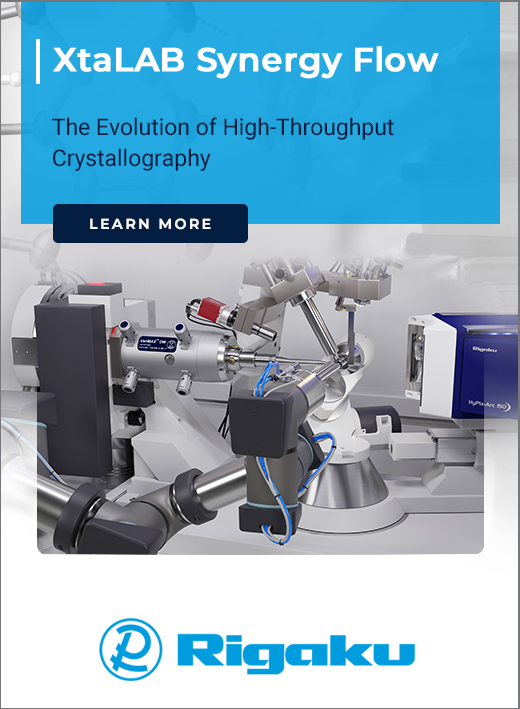


Editorial
Editorial
![Thumbnail [Thumbnail]](https://www.iucr.org/__data/assets/image/0010/150211/crystal.gif)
The COVID-19 crisis continues to spread throughout the world, with worryingly large outbreaks occurring. Although in many countries restrictions have eased, the recent trends are disturbing, and I think we are all in for a bumpy ride in the next few months. As we saw in the last IUCr Newsletter, crystallography has been playing a significant role in helping to understand the SARS-CoV-2 virus, a vital area of research. Such research is often taking place through national facilities such as synchrotrons, neutron sources, and of course, electron microscopes. Crystallographers are well used to working with X-rays, neutrons and electrons as part of the fight against this deadly pandemic. Almost uniquely amongst all the sciences, we are exceptionally fortunate to have our own scientific union, the International Union of Crystallography (IUCr), and so we crystallographers are well used to international collaboration, which is necessary to make progress in this field.
So what do we have in this issue of the Newsletter? Science is full of forgotten scientists who played essential roles in the development of the science we see today. I think that it is useful to look back from time to time to understand who they were. One of these is Walter Friedrich. We publish a report translated by Peter Heaney and Melanie Kaliwoda on a rare interview with Friedrich, who, in 1912, together with Paul Knipping, was the first to obtain X-ray diffraction images from crystals, thus showing that X-rays had the properties of waves. Both of them have largely been forgotten, for it was their leader Max von Laue who gained the 1914 Nobel Prize for this work. It was this work that then led W. H. and W. L. Bragg in the same year to establish a new scientific discipline: X-ray crystallography. This, after all, is the subject that is today playing such an important part in research into the SARS-CoV-2 virus. Friedrich and Knipping had to work under challenging conditions, apparently, as Laue was not able to persuade his boss, Arnold Sommerfeld, that the experiments were worth undertaking. As an aside, I recall many years ago during an IUCr Congress that Paul Ewald, who had been a student of Sommerfeld’s in 1912, told me that Friedrich and Knipping secretly “stole” Röntgen’s X-ray apparatus to carry out the tests!
![[Fig. 1]](https://www.iucr.org/__data/assets/image/0011/150212/hybrid.gif)
Another largely forgotten scientist is Jan Czochralski, whose name is well known among crystal growers in connection with the so-called Czochralski method. But who, in fact, was Czochralski? In which country did he live, and what did he do? Many think he was an American scientist of Polish origin, but this was not the case. For years his story was kept in the dark, but today in his native Poland, after years of ignominy, he is celebrated as a hero. How has this come about? It is an interesting story, full of mystery and intrigue, a life set against the terrible events of the Second World War in Germany and Poland.
Recently, the Royal Mint in the UK has produced an excellent new 50 pence coin celebrating the famous Photo 51 of Rosalind Franklin. This caused some discussion on Twitter, mostly as it was not obvious what the image on the coin actually showed. You can read about this coin here and how to obtain one for yourself.
The IUCr together with UNESCO has been active for several years in promoting crystallography in Africa, and the benefits of this are becoming apparent. In this issue, we have an article written by a young crystallographer in Benin, Sidoine Bonou, who describes his own journey into research and his visits to Italy to learn the crystallographic arts. He describes his travel to Naples, Bari and Trieste in order to gain a wide experience. As he points out, significantly, it was the first time he had the opportunity to visit a synchrotron.
I was pleased to hear that the Royal Swedish Academy of Sciences has decided to award the Gregori Aminoff Prize 2021 to Henry Chapman (University of Hamburg, Germany), Janos Hajdu (Uppsala University, Sweden) and John Spence (Arizona State University, Tempe, AZ, USA) “for their fundamental contributions to the development of X-ray free electron laser based structural biology”. The Gregori Aminoff Prize is an international prize awarded since 1979 by the Royal Swedish Academy of Sciences in the field of crystallography.
Finally, there has been a new addition to the Royal Society Biographical Memoirs, which will be of interest to crystallographers. This is about Ken Jack, who worked on three main areas of materials science: metals, glasses and ceramics. See here.
Stay safe!
Copyright © - All Rights Reserved - International Union of Crystallography







